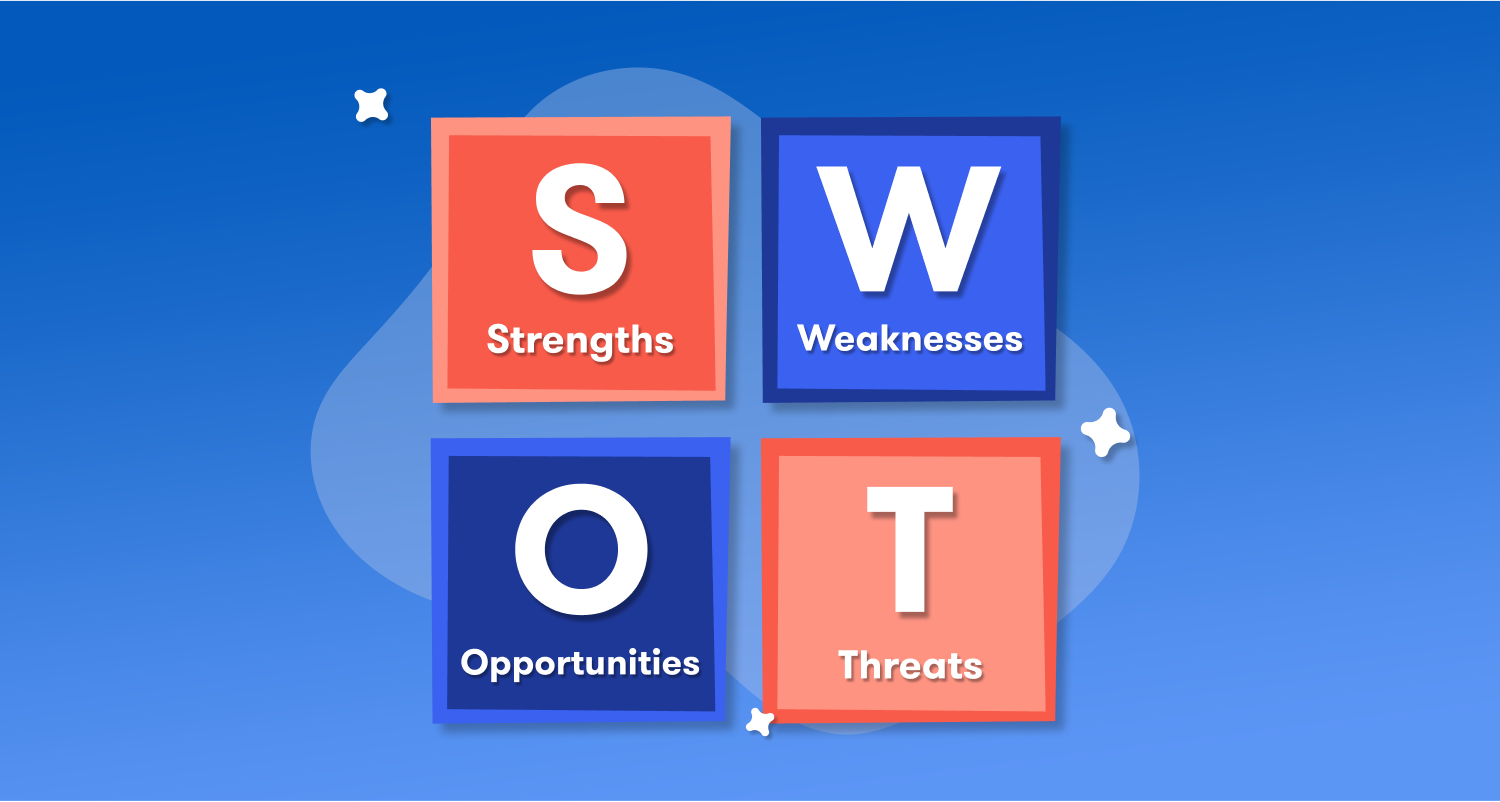Define, Measure, And…? (Use Six Sigma Like a Pro With This Template)


Share this article

Have you ever wondered how some of the world's top companies consistently deliver flawless products and services and exceed customer expectations every time?
Like how does Coca-Cola produce millions of cans of their famous beverage that taste exactly the same throughout the world? And how does Apple make sure that every iPhone is equally efficient in every part of this planet—from Alaska to Australia?
Well, there are many secrets to their success. We’ll discuss one of their secrets in this article. And that secret lies in their detailed approach to process improvement that has become the foundation of modern business success—Six Sigma.
The Six Sigma tool first came into the picture in the 1980s when an American engineer Bill Smith introduced it while working for Motorola. The tool turned out to be so effective that Motorola trademarked it in 1993.
Soon, other conglomerates jumped on the bandwagon and became early adopters of Six Sigma. Among these are renowned names like Honeywell and General Electric.
So, the Six Sigma tool features two methodologies: DMAIC and DMADV. DMAIC stands for define, measure, analyze, improve, and control, while DMADV stands for define, measure, analyze, design, and verify.
In this article, we’ll focus on DMAIC and explain this methodology with an engaging example. Whether you’re a consultant trying to offer a 10X ROI to your client or a university student ready to wow your professor, this article has something for everybody.
So, let’s dive into it.
Like how does Coca-Cola produce millions of cans of their famous beverage that taste exactly the same throughout the world? And how does Apple make sure that every iPhone is equally efficient in every part of this planet—from Alaska to Australia?
Well, there are many secrets to their success. We’ll discuss one of their secrets in this article. And that secret lies in their detailed approach to process improvement that has become the foundation of modern business success—Six Sigma.
The Six Sigma tool first came into the picture in the 1980s when an American engineer Bill Smith introduced it while working for Motorola. The tool turned out to be so effective that Motorola trademarked it in 1993.
Soon, other conglomerates jumped on the bandwagon and became early adopters of Six Sigma. Among these are renowned names like Honeywell and General Electric.
So, the Six Sigma tool features two methodologies: DMAIC and DMADV. DMAIC stands for define, measure, analyze, improve, and control, while DMADV stands for define, measure, analyze, design, and verify.
In this article, we’ll focus on DMAIC and explain this methodology with an engaging example. Whether you’re a consultant trying to offer a 10X ROI to your client or a university student ready to wow your professor, this article has something for everybody.
So, let’s dive into it.
KEY TAKEAWAYS
- Six Sigma was first used by Motorola as a methodology for process improvement and quality management in the 1980s.
How to Use the DMAIC Methodology of Six Sigma (With Examples)
Alright, buckle up everybody. We’re about to dive deep into the DMAIC methodology. Bear in mind that it’s not just an acronym—it’s a tool that will solve some of your biggest problems in business.

As mentioned above, DMAIC stands for define, measure, analyze, improve, and control. Let’s begin this journey with the first part: define.
This phase is like charting the course for your voyage to ensure that everyone knows the destination. During this phase, you also set clear project goals, which act as your true north throughout the process.
Example of the Define phase:
Since the Six Sigma tool was created by a phone manufacturer company, let’s use smartphones as an example. Let’s assume company X had been getting a lot of complaints about their phone’s battery life and overheating.
So, they decided to use the DMAIC methodology and started by defining the problem: declining smartphone performance and customer dissatisfaction. Feedback and surveys were gathered to understand specific customer requirements.
Good start!
Furthermore, you should also map your process during this phase. This can be done by creating process maps or flowcharts to visually represent the steps and variables in the process. Some metrics you should pay particular attention to are process capability indices, defect rates, and cycle time.
Example of the Measure phase:
Continuing with the previous example, in the "Measure" phase, company X collected data to quantify the current state of smartphone performance.
It turned out that their device battery lasted only for 6.3 hours on average and the phone reached 38°C temperature after only 45 minutes of usage.
Well, something’s not right.
For instance, you could use the Fishbone (Ishikawa) diagram to dive into the data and identify the underlying causes of defects or inefficiencies. Hypothesis testing is another popular analysis technique in Six Sigma.
Through this, you can use tests like t-tests, chi-square tests, and ANOVA to formulate hypotheses about potential causes and validate or reject these hypotheses.
Example of the Analyze phase:
Company X decided to critically identify the root causes of their device’s issues. They analyzed data and conducted tests to investigate potential causes, such as software updates, battery capacity, and processor efficiency.
After a detailed analysis, they found out that a recent software update is the main cause of device heating and early battery drainage.
To achieve this, the team will have to do a lot of brainstorming. So, brainstorm and evaluate potential solutions to the identified problems. You could also do pilot testing of the proposed solutions on a small-scale (pilot) to assess whether they’re working or not. If they work well, implement them on a larger scale.
Example of the Improve phase:
The company rolled out a software update that addressed battery optimization, improved processor efficiency, and made design changes that allowed faster cooling. They conducted a pilot test by giving 500 smartphones to a group of customers.
After three months, the results showed a significant improvement. The battery life increased to 14 hours whereas the device temperature didn’t cross 32°C.
So, roll up your sleeves and create control plans to maintain the improved process. These plans should outline specific actions, responsibilities, and measurements required to sustain processes that are working exceptionally well.
Example of the Control phase:
Finally, when things are starting to go right, company X introduces mechanisms to ensure that the improvements are sustained. To achieve this, a team of engineers monitors key performance metrics like battery life and device temperature, while the marketing team monitors customer satisfaction ratings.
New software updates are now pilot-tested to ensure they don’t cause overheating or battery drainage again. These updates are rolled out to the masses only after the pilot tests are successful.

As mentioned above, DMAIC stands for define, measure, analyze, improve, and control. Let’s begin this journey with the first part: define.
1. Define
In the first phase of DMAIC, you define the system you're working on, understand the voice of the customer, and identify their requirements. The "Define" phase is where you establish the purpose, scope, and boundaries of your project, ensuring that you're on the right track from the start.This phase is like charting the course for your voyage to ensure that everyone knows the destination. During this phase, you also set clear project goals, which act as your true north throughout the process.
Example of the Define phase:
Since the Six Sigma tool was created by a phone manufacturer company, let’s use smartphones as an example. Let’s assume company X had been getting a lot of complaints about their phone’s battery life and overheating.
So, they decided to use the DMAIC methodology and started by defining the problem: declining smartphone performance and customer dissatisfaction. Feedback and surveys were gathered to understand specific customer requirements.
Good start!
2. Measure
This is the phase in which you collect and analyze data to quantify the current state of the process. Using tools such as surveys, process maps, and data sampling, you gather important insights into your processes. As a general rule, take steps to ensure data accuracy and reliability.Furthermore, you should also map your process during this phase. This can be done by creating process maps or flowcharts to visually represent the steps and variables in the process. Some metrics you should pay particular attention to are process capability indices, defect rates, and cycle time.
Example of the Measure phase:
Continuing with the previous example, in the "Measure" phase, company X collected data to quantify the current state of smartphone performance.
It turned out that their device battery lasted only for 6.3 hours on average and the phone reached 38°C temperature after only 45 minutes of usage.
Well, something’s not right.
3. Analyze
This phase is all about investigating the root causes of defects or inefficiencies. So, you should carefully observe the root causes of problems and determine why the process is not producing the desired outcomes. There are several ways to go around this.For instance, you could use the Fishbone (Ishikawa) diagram to dive into the data and identify the underlying causes of defects or inefficiencies. Hypothesis testing is another popular analysis technique in Six Sigma.
Through this, you can use tests like t-tests, chi-square tests, and ANOVA to formulate hypotheses about potential causes and validate or reject these hypotheses.
Example of the Analyze phase:
Company X decided to critically identify the root causes of their device’s issues. They analyzed data and conducted tests to investigate potential causes, such as software updates, battery capacity, and processor efficiency.
After a detailed analysis, they found out that a recent software update is the main cause of device heating and early battery drainage.
4. Improve
Once you’ve put in effort in phases 1-3 and analyzed what’s working and what isn’t, you should look for areas of improvement. Take this opportunity to develop and implement solutions to address the root causes that you’ve identified.To achieve this, the team will have to do a lot of brainstorming. So, brainstorm and evaluate potential solutions to the identified problems. You could also do pilot testing of the proposed solutions on a small-scale (pilot) to assess whether they’re working or not. If they work well, implement them on a larger scale.
Example of the Improve phase:
The company rolled out a software update that addressed battery optimization, improved processor efficiency, and made design changes that allowed faster cooling. They conducted a pilot test by giving 500 smartphones to a group of customers.
After three months, the results showed a significant improvement. The battery life increased to 14 hours whereas the device temperature didn’t cross 32°C.
5. Control
This is the last phase of DMAIC. The objective for this one is to establish controls and monitor mechanisms to sustain the improvements that have been identified in phase 4. The aim is also to prevent the recurrence of problems.So, roll up your sleeves and create control plans to maintain the improved process. These plans should outline specific actions, responsibilities, and measurements required to sustain processes that are working exceptionally well.
Example of the Control phase:
Finally, when things are starting to go right, company X introduces mechanisms to ensure that the improvements are sustained. To achieve this, a team of engineers monitors key performance metrics like battery life and device temperature, while the marketing team monitors customer satisfaction ratings.
New software updates are now pilot-tested to ensure they don’t cause overheating or battery drainage again. These updates are rolled out to the masses only after the pilot tests are successful.
Free DMAIC Template by Consultport
Alright, now that you know what Six Sigma is and how it can be used in a practical situation, how about a template that you can use for your projects? Don’t worry, we’ve got you covered.

Consultport is the world’s leading online consulting platform and we connect top consultants to top clients. And guess what, our consultants happily use Six Sigma from time to time. In fact, over a thousand enthusiastic consultants are utilizing our DMAIC Templates to supercharge their process improvement efforts!
Now, you can download this template, too.
Simply customize the template on Excel or Google Spreadsheet. Please note that it's optimized for desktop use, so we'll send you an email to make sure you can access it seamlessly. Boost your productivity and achieve exceptional results for clients—download the template now!


Consultport is the world’s leading online consulting platform and we connect top consultants to top clients. And guess what, our consultants happily use Six Sigma from time to time. In fact, over a thousand enthusiastic consultants are utilizing our DMAIC Templates to supercharge their process improvement efforts!
Now, you can download this template, too.
Simply customize the template on Excel or Google Spreadsheet. Please note that it's optimized for desktop use, so we'll send you an email to make sure you can access it seamlessly. Boost your productivity and achieve exceptional results for clients—download the template now!

Share this article
Premium content,
on a weekly basis.
on a weekly basis.
Subscription implies consent to our privacy policy.
×


Premium Content, on a Weekly Basis
Subscribe to the Consultport Blog for expert insights on consulting, digital transformation, and the future of work, delivered straight to your inbox.

Discover our Consultant's Expertise
Ready to get access to the world’s best consultants?
